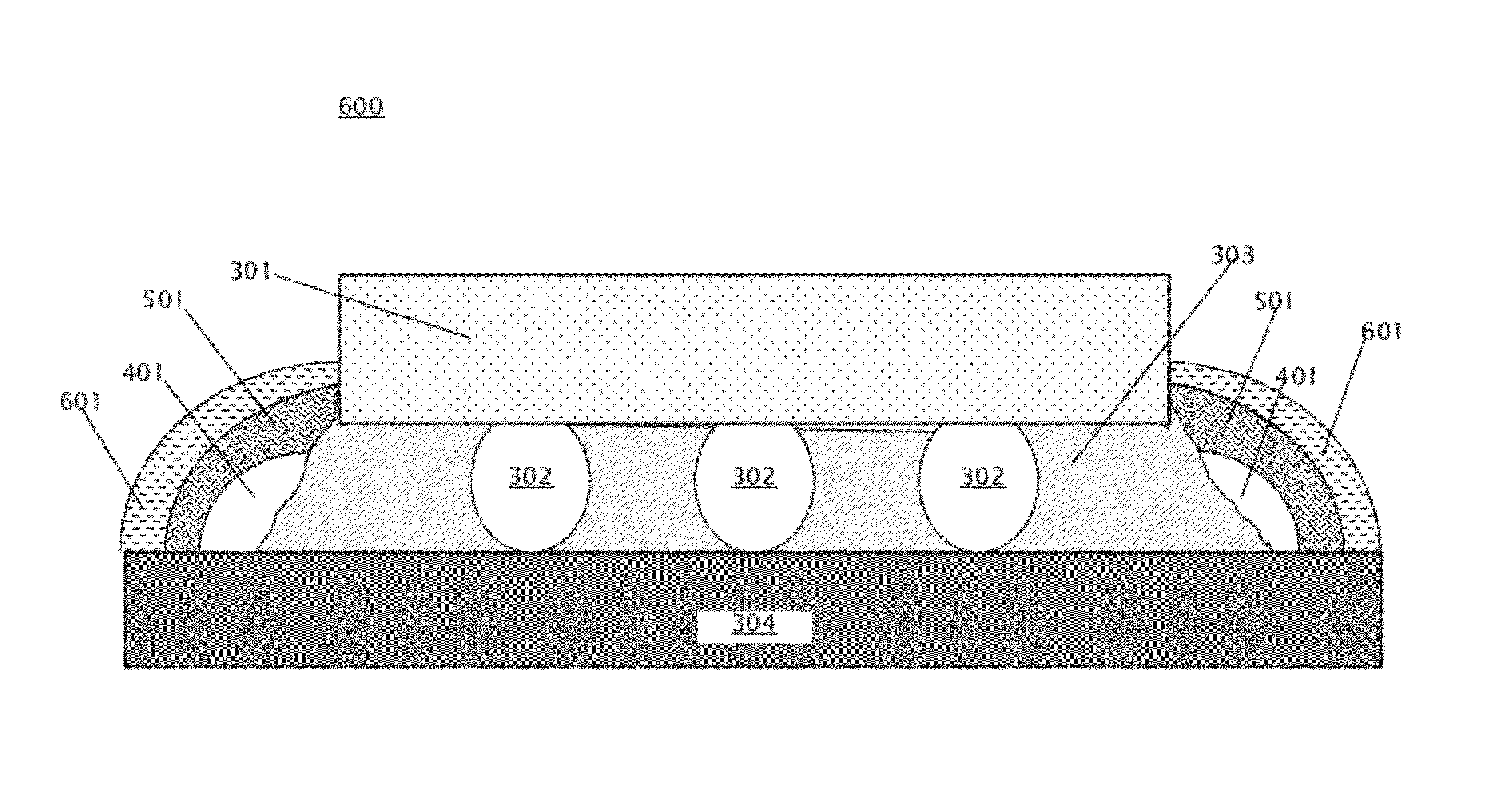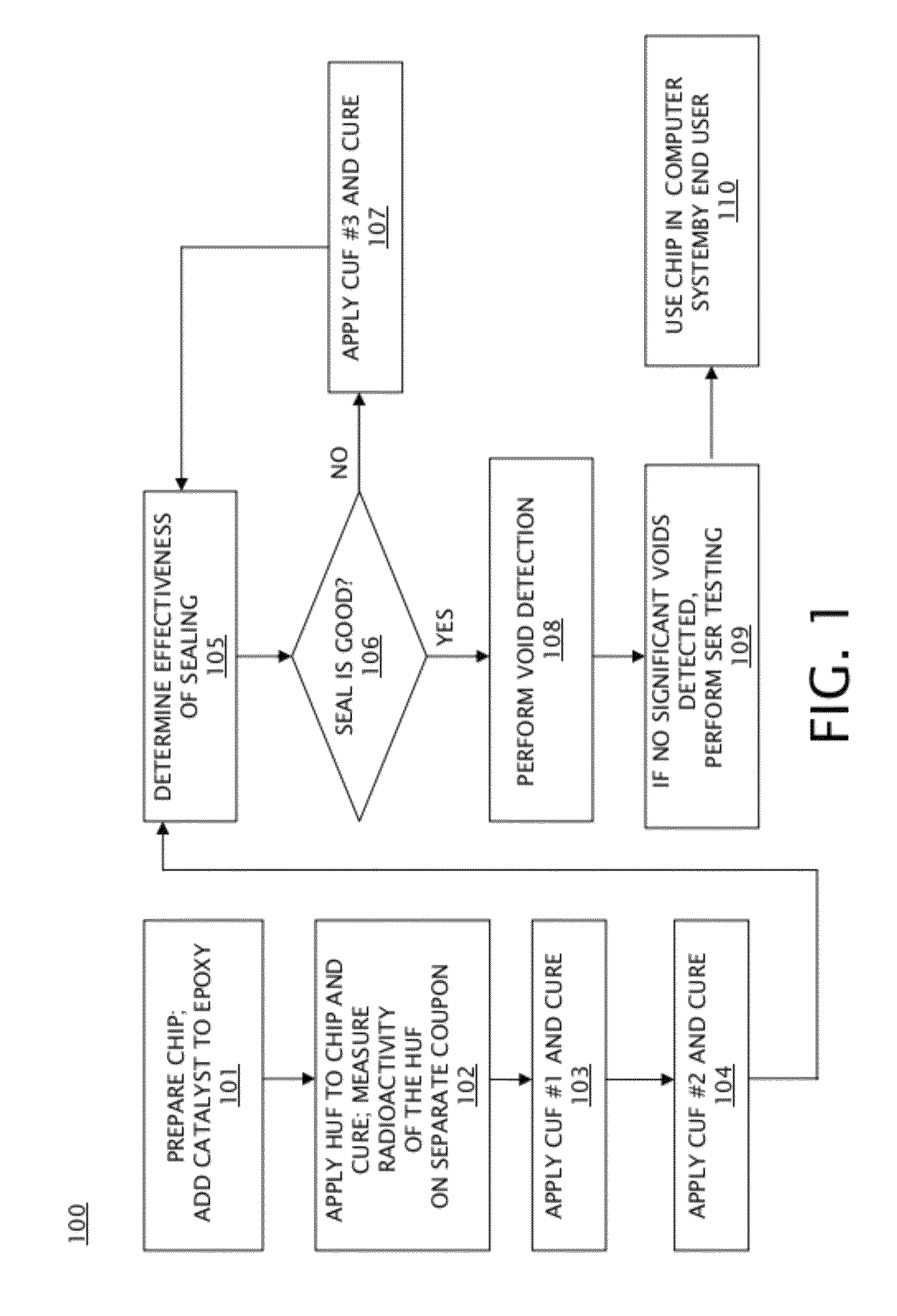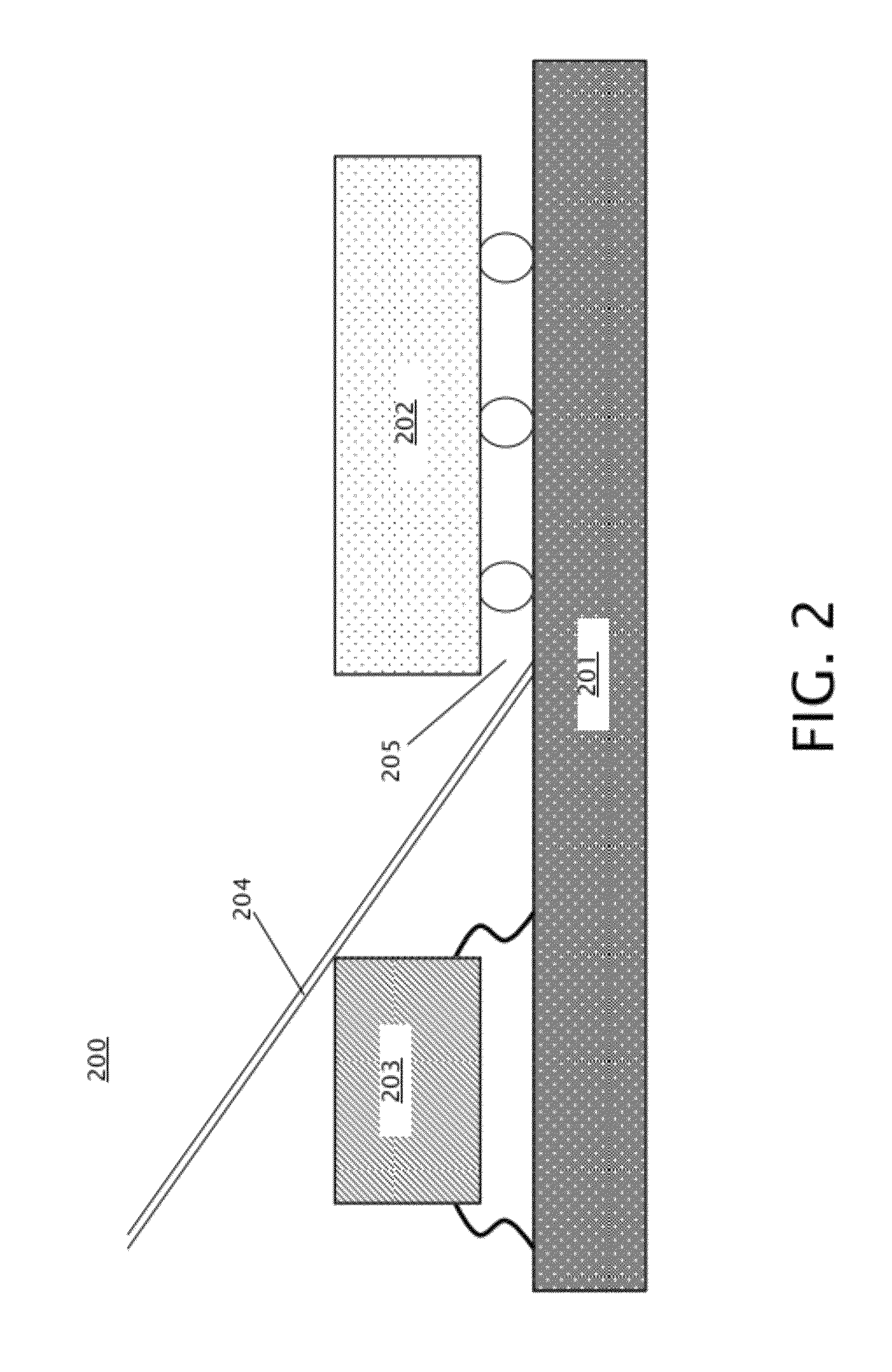SER testing for an IC chip using hot underfill
a technology of ic chips and sub-layers, applied in semiconductor/solid-state device testing/measurement, semiconductor/solid-state device details, instruments, etc., can solve the problem of allowing access by a hand-held radioactive source, emitted trace amounts, and too small chip-to-substrat gap
- Summary
- Abstract
- Description
- Claims
- Application Information
AI Technical Summary
Problems solved by technology
Method used
Image
Examples
Embodiment Construction
[0017]Embodiments of a method for SER testing for an IC using HUF are provided, with exemplary embodiments being discussed below in detail. Because the half-life of the HUF used for SER testing may be relatively long, proper tracking during SER testing of the HUF chip, and removal and disposal of the HUF chip after testing, may be necessary. Tracking, removal and disposal may add significantly to the cost of the SER testing process. Therefore, to eliminate the needs for tracking, removal, and disposal of the HUF chip, a relatively short-lived isotope may be used for the HUF. After a dozen or so half-lives of the isotope comprising the HUF, which may be days to weeks in some embodiments, the HUF chip is safe to be used in an operational computing device by an end user, with minimal risk of radioactive exposure to the user. The radioactivity of the HUF may be measured right after HUF is applied to the chip by applying it to a test coupon, separate from the chip. Then, using the normal...
PUM
 Login to View More
Login to View More Abstract
Description
Claims
Application Information
 Login to View More
Login to View More - R&D
- Intellectual Property
- Life Sciences
- Materials
- Tech Scout
- Unparalleled Data Quality
- Higher Quality Content
- 60% Fewer Hallucinations
Browse by: Latest US Patents, China's latest patents, Technical Efficacy Thesaurus, Application Domain, Technology Topic, Popular Technical Reports.
© 2025 PatSnap. All rights reserved.Legal|Privacy policy|Modern Slavery Act Transparency Statement|Sitemap|About US| Contact US: help@patsnap.com



